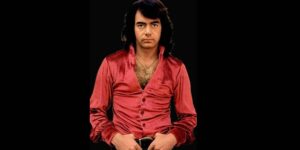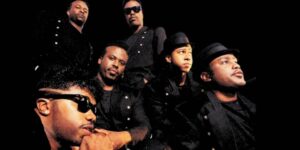The Birth of Disco
Disco, a genre of music characterized by its upbeat tempo, catchy melodies, and flashy dance moves, had its roots in the 1960s and 1970s. Born out of the fusion of funk, soul, and Latin music, disco’s early adopters were predominantly African American and Latino, with clubs like the Palladium in New York and the Whisky a Go Go in Los Angeles becoming hotspots for the burgeoning scene.
Disco’s Rise to Prominence
By the mid-1970s, disco had begun to gain mainstream popularity, thanks in part to the release of albums like Chic’s Risque (1979) and Donna Summer’s Love to Love You Baby (1975). As the genre’s popularity soared, disco’s influence seeped into the pop charts, with acts like the Bee Gees and the Trammps topping the charts with hits like “Stayin’ Alive” and “Disco Inferno.”
The Billboard Top 100 Takeover
In 1977, the Billboard Top 100 chart, which tracks the most popular songs in the United States, became a virtual disco monopoly. For the first time in history, the top 10 spots on the chart were dominated by disco artists, with the Bee Gees’ “How Deep Is Your Love” claiming the number one spot. This phenomenon was not a one-time fluke – disco artists continued to dominate the chart throughout 1978 and 1979, with acts like Donna Summer, Chic, and the Trammps ruling the airwaves.
The Sound of the Times
Disco’s impact extended far beyond the music charts. The genre’s sleek, stylish aesthetic and accompanying dance moves became a staple of 1970s pop culture. Saturday Night Fever, a 1977 film starring John Travolta as a disco-obsessed Brooklyn youth, became a cultural phenomenon, cementing disco’s place in the American psyche. The film’s soundtrack, featuring hits like the Bee Gees’ “Stayin’ Alive” and “How Deep Is Your Love,” further solidified disco’s grip on the music scene.
The Critics and the Cynics
Not everyone was thrilled with disco’s rise to prominence. Critics accused the genre of being shallow and superficial, with its reliance on synthesized beats and lavish production values. Some musicians, like punk rock icon Joey Ramone, dismissively referred to disco as “crap.” Despite these criticisms, disco’s impact on popular music was undeniable, and its influence would be felt for years to come.
Disco’s Legacy
Disco’s legacy extends far beyond its chart-topping singles and album sales. The genre’s influence can be heard in everything from contemporary pop and electronic music to hip-hop and R&B. Disco’s emphasis on danceability and catchy melodies has made it a staple of modern pop music, with artists like Justin Timberlake and Lady Gaga frequently incorporating disco elements into their work.
Conclusion
The disco explosion of the late 1970s was a cultural phenomenon that captured the hearts and souls of a generation. Its impact on popular music and culture was profound, paving the way for future dance-oriented genres and cementing its place in the pantheon of American pop culture. Despite its critics, disco’s legacy endures, with its influence felt in every corner of the music industry.
FAQs
Q: What was the peak of disco’s popularity?
A: Disco’s popularity peaked in 1977-1979, with its influence dominating the Billboard Top 100 chart and soundtracking films like Saturday Night Fever.
Q: Who were some of the most popular disco artists?
A: Some of the most popular disco artists of the late 1970s included the Bee Gees, Donna Summer, Chic, the Trammps, and the Weather Girls.
Q: What was the impact of disco on pop culture?
A: Disco’s impact on pop culture was significant, with its influence extending beyond music to fashion, film, and dance. The genre’s sleek, stylish aesthetic and accompanying dance moves became a staple of 1970s pop culture.
Q: Did disco ever die?
A: While disco’s popularity as a mainstream phenomenon waned in the early 1980s, its influence continued to be felt in various forms. Disco’s legacy can be heard in contemporary pop, electronic, and dance music, with many artists continuing to draw inspiration from the genre.






